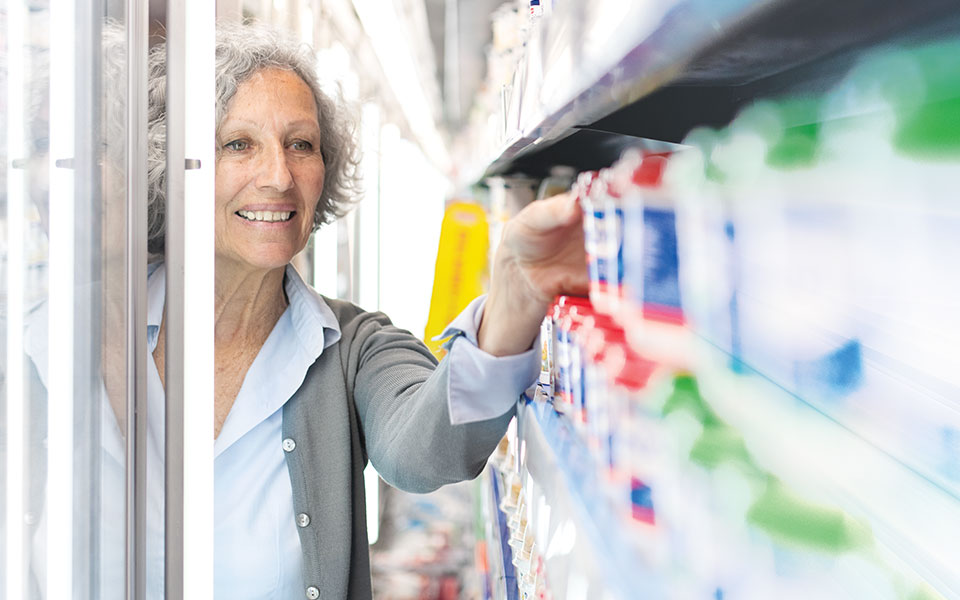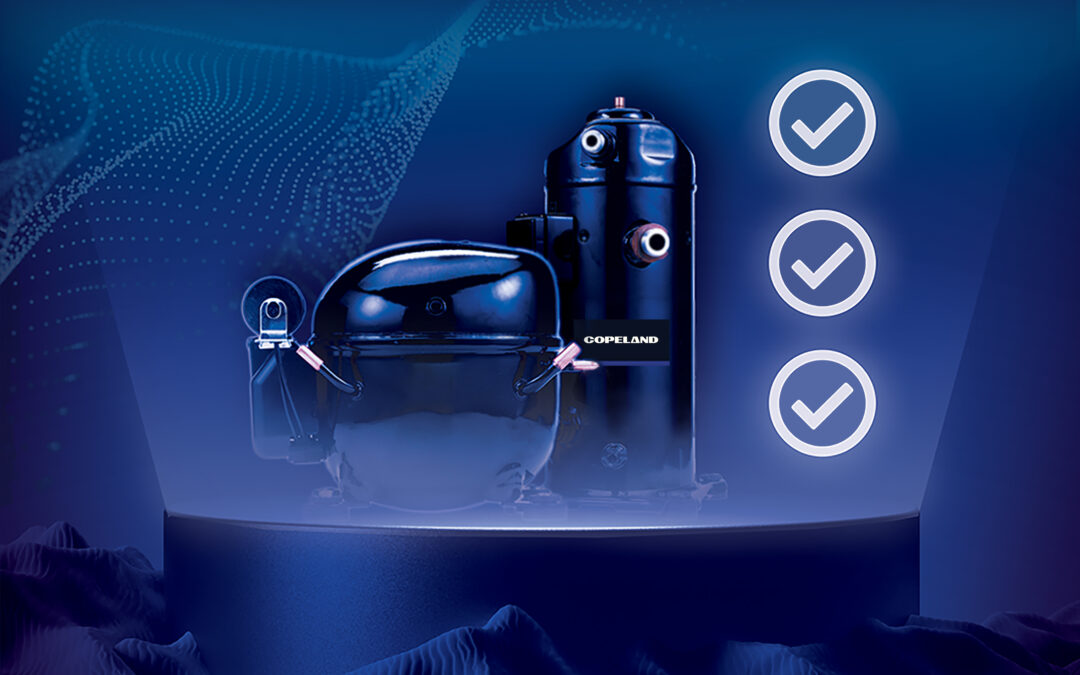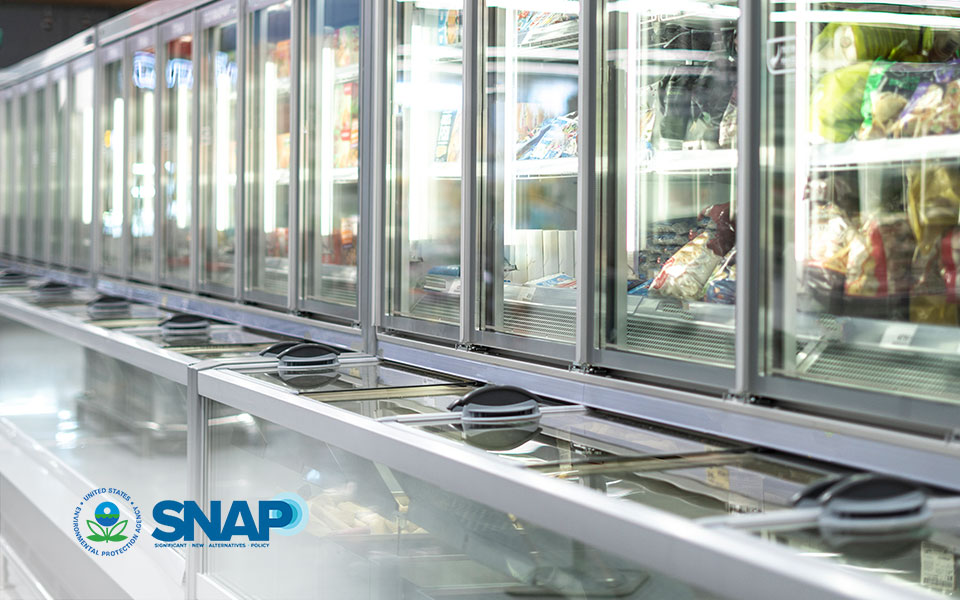Warm-weather CO2 strategy helps retailer to hit sustainability target

*On June 1, 2023 Emerson’s Climate Technologies business became a new standalone company – Copeland. Though our name has changed, we are building on more than a century of HVACR innovation and industry leadership, and Copeland continues to offer the same products, industry stewardship, and learning opportunities you’ve grown to trust. Information found on this webpage posted before June 1, 2023 may contain our old name or branding, but you can be at ease knowing it was created with the knowledge and expertise of Copeland.
The transition from hydrofluorocarbon (HFC) refrigerants to lower-global warming potential (GWP) alternatives has become a common denominator in many food retailers’ sustainability strategies. Whether your company is in the early phases of its sustainability journey or has already made significant progress in the race to Net Zero, you’ve likely evaluated the potential of CO2-based refrigeration. Among the many misperceptions about CO2 transcritical booster systems is that they are not well-suited for installations in warmer climates. Emerson recently partnered with Zero Zone to help a leading food retailer prove the business case for warm-weather CO2 refrigeration. To view the full article, click here.

Expanding application potential
When calculating the sustainability potential of a refrigeration system, it’s important to look at its total equivalent warming impact (TEWI), including direct carbon emissions from refrigerant leaks and indirect emissions from energy consumption. Although the natural refrigerant CO2 (or R-744) has a GWP of 1, many supermarket owners and operators have questions about the efficiency of CO2 transcritical booster systems, especially in warmer climates.
CO2 transcritical booster refrigeration systems have been installed in Europe for decades and are expanding rapidly around the globe. Today, nearly 1,000 CO2 transcritical booster systems are installed in the U.S., with adoption projected to increase more than 50% by 2025. System designers, original equipment manufacturers (OEMs) and component manufacturers (e.g., Emerson) have made tremendous strides in developing smart CO2 transcritical booster system strategies that:
-
- Improve energy efficiencies in warmer climates
- Optimize system performance and reliability
- Lower the total cost of ownership (TCO)
- Simplify system start-up, operation, high-pressure management and maintenance
Retailers who are now looking at CO2 for the first time will benefit from years of installations and supermarket trials that have significantly improved upon CO2 transcritical booster equipment technologies.
Proving the business case
In a recent collaboration, Emerson partnered with refrigeration OEM Zero Zone to help them design and install a CO2 transcritical booster system for a new supermarket in Joplin, Mo. Due to the location’s warm climate, the design team recommended an emerging high-ambient mitigation strategy designed to maximize the efficiency of CO2 during the summer season. The goals of the project were to help the retailer to meet their sustainability targets while maintaining the highest standards for food quality and safety.
The climate in Joplin averages more than 200 annual hours above R-744’s critical point of 87.8 °F. During these warmer temperatures, a CO2 transcritical booster system would typically enter transcritical mode and consume electricity at a higher rate, but the Emerson and Zero Zone system has been designed to operate efficiently across even these high temperature ranges. With recent advances in system technologies, stakeholders can choose from multiple CO2 strategies designed to mitigate high-ambient temperatures, minimize transcritical operation, and maximize energy efficiencies.
For the Joplin installation, Zero Zone and Emerson opted to utilize an adiabatic gas cooling strategy on the system’s outdoor condenser/gas cooler. When summer heat builds and R-744 pressures begin to rise within the gas cooler, water is misted onto adiabatic cooling pads — effectively keeping R-744 below its critical point during warm stretches and dramatically improving system efficiency. Today, this installation is operating as designed for Zero Zone’s food retail customer, delivering year-round efficiencies and refrigeration reliability.
The system features a full suite of integrated Emerson CO2 technologies — from low- (LT) and medium temperature (MT) compressors to CO2 refrigeration rack controls case controls and high-pressure controls — that are helping Zero Zone to prove the business case for warm-climate CO2 systems. Not only have these technological advances greatly expanded the potential of CO2 applications in diverse climates, but they’re accelerating CO2 adoption for a new generation of end users and service technicians.
For more information about the high-ambient CO2 mitigation strategy used in this installation, you can read our case study to learn about Emerson’s commitment to developing integrated CO2 technologies, please visit our CO2 information hub.

A2L refrigerant regulation updates: what you need to know today
by Jennifer Butsch | Efficiency & Refrigerant Regulations
Preparing for the approval and safe use of A2Ls in commercial refrigeration applications The move...

Address Efficiency Mandates with Compression Technologies
by Joe Summers | Efficiency & Refrigerant Regulations
Strategies for complying with DOE and ENERGY STAR® in self-contained and remote condensing units...

EPA SNAP Rule 26 Approves, Modifies Use Conditions for A2L and A3 Refrigerants
by Jennifer Butsch | Efficiency & Refrigerant Regulations
On May 28, the Environmental Protection Agency (EPA) pre-published its Significant New...
The post Warm-weather CO2 Strategy Helps Retailer to Hit Sustainability Target appeared first on Copeland.